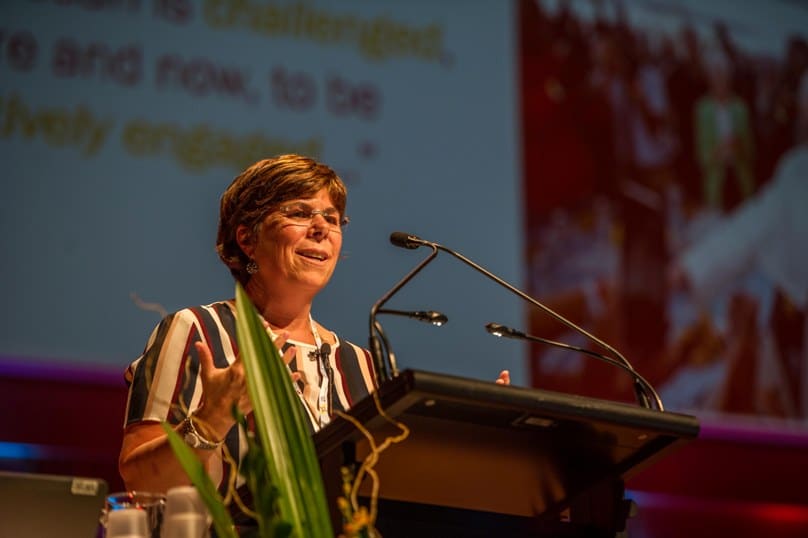
Parishes need to ask themselves how they are serving the wider community and to make a barefaced assessment of whether they are welcoming and outgoing places, Dr Susan Timoney of the archdiocese of Washington told delegates at a conference on parish renewal, in Chatswood, Sydney, earlier today.
Dr Timoney, who has oversight of social and evangelical agencies in her archdiocese, began by asking people for a show of hands as to whether they loved their parish – a question which netted a muted response.
“(Where) people love their parishes (it is) because they have found a spiritual home,” she said.
“Parishioners become like family members and parish events become as important as family events.”
The parish was at one and the same time a family, but also the “home of resident aliens”, of an itinerant Church moving together towards God.
She told delegates to ask themselves whether or how they served the wider community, whether they were truly embedded in their neighbourhoods, and whether they provided a space for civic events and gatherings, harnessing such opportunities for greater engagement.
She said the parish could and ought to be like a fountain in the heart of an Italian piazza – a place where the community could gather, as its lifeblood.
Often, there was simply a need for Catholics to be “more intentional” about inviting people – literally inviting them.
Excepting the Spirit, the most important thing evangelising parishes needed was a missionary consciousness, Dr Timoney said, citing comments Sydney archbishop, Archbishop Anthony Fisher OP, made in an interview with Crux, last year:
“I’m excited about the opportunity to present the gospel to people who are hungry for it … Many simply have never been presented with it.”
There was also an urgent need to recognise that people who aren’t part of the Church aren’t necessarily against the Church.
Dr Timoney identified the groups to whom parishes were called to minister – ministry to each of them requiring a different kind of language: those who did not know much about God; people who had been hurt or alienated by the Church; and a third group who had been evangelised, but not to the extent that they saw sharing Christ with others as essential to being Christian.
“Jesus did not wait for people to come; he was inviting … heading into anyone’s home who had some free time to spend some time with him …. going out and inviting people to say ‘stay with me’…
“It’s not the schools and the institutions and the buildings that help some encounter Christ, it’s what goes on in them and the people who are in them that are the face of Christ to others.”
She gave delegates an overview of the ‘indicators of vitality’ her archdiocese had developed, in five key areas: worship, education, community, service and communication.
There was no one program which could replace or fulfill the basic need to engage others outside the parish community.
She spoke about a neighbour who would always ask her “loaded questions” about the Church when he saw her out the front of their respective properties, asking her on one occasion “Do you actually believe it … all of it?”
Her reply: “I believe that the Catholic Church has the best answers to the most important questions.”
She said she did not know what God affected in such encounters but that Catholics, as Pope Francis has repeatedly said, are a people of hope in an age of seeming hopelessness, and that it was “our turn” to help others quench their attendant “thirst”.
